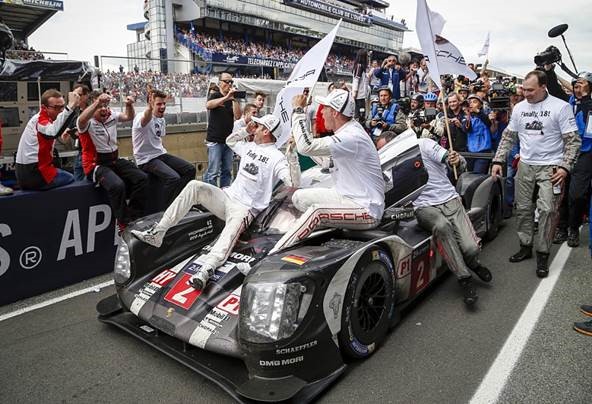You are in: Blog

This past weekend we witnessed the most incredible and cruel end to the world famous Le Mans 24 hour race, with Toyota leading Porsche by 1m24s going into the final 10 minutes of the race, and with just 5 minutes of the 24 hours to go, Toyota driver Kazuk
After a race long duel where the Toyota team and drivers did a fantastic race, to come within 5 minutes of achieving the Japanese manufacturers dream of Le Mans victory, it was certainly a heart breaking moment as the no 2 Porsche driven by Neel Jani took the checkered flag, after passing the stricken lead Toyota on the start finish straight to secure back to back victories for the German manufacturer.
This year the hybrid technologies showed marked improvement not only in pure power, but via stretching the pit windows allowing teams to utilise more flexible race strategies resulting in an epic battle between Toyota and Porsche.
As ever the lessons learned in the heat of competition will filter down to the automotive main stream markets, as manufacturers continue to develop low carbon product offerings based around hybrid power train solutions for the future.
Forecasting is difficult indeed because one is estimating such things as unpredictable politicians and their subsidies and inventions yet to be made. Another factor could be cars becoming mainly rentals – throttling market growth – or mainly autonomous, making the powertrain a commodity, a view recently expressed by Porsche Engineering. IDTechEx forecasts EVs, hybrid and pure electric, in 46 categories and runs scenarios. In one, we see an eventual collapse in sales of both as mainstream pure electric vehicles become the most attractive and affordable option in the view of most mainstream buyers.
The other extreme in developing ICE powertrains in the short term with three electric modes – silent take-off, creeping in traffic, and maintained-speed “active” coasting – is the 48V mild hybrid. It is the lowest-cost route to an electric vehicle at the larger C and D sizes of car and larger vehicles such as vans, trucks, and buses. Following the first series production in 2017 (and even then not yet in EV form), it is possible that 48V mild hybrids will peak at more than $250 billion in yearly sales before pure electric takes over; currently they look to be the only low-cost way that manufacturers can meet the tough 2030 emissions legislation with minimal hassle.
With Tekdata currently working on a commercial application, via utilising some of its innovative technologies to produce a bespoke solution that must be both light weight and robust, Tekdata are yet again at the forefront of market sector development.
Article first published : 29/6/2016